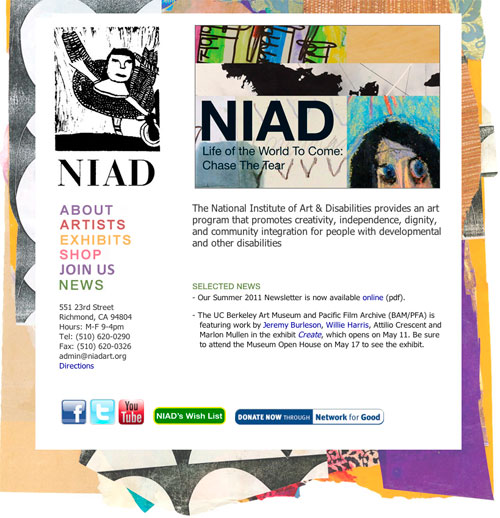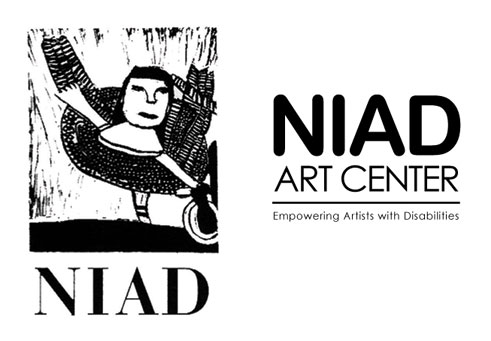When I first started working at NIAD Art Center back in July of 2007 I wasn’t exactly a web design expert. I had dabbled a bit with html and did have a rudimentary website for my artwork. Piecing it together was a painful process. So when I was faced with the task of maintaining a website for a small non-profit I was a little nervous to say the least. It was a weakness on my resume, but over the last few years I’ve managed to make updates and overhauls with just a few minor speed bumps.
Since then I’ve spent a lot of my free time building websites for art and beer related endeavors. Along the way I tried learning and writing html, but didn’t have the focus and determination. Updating NIAD’s old website required using Adobe Dreamweaver, which has a built in design window where you can visually compose a page without having to write paragraphs of html code. You still have to know a bit of html, but the program is designed for non-coders.
NIAD’s website has gone through several iterations since the mid 90’s and the prior version received a lot of compliments, but over the last year it started to look tired and too static. In addition, the size, scope of information and the complexity required to make updates made it tedious to maintain. NIAD’s website needed an overhaul and I was happy to take on the challenge, although a bit nervous.


My goals for the redesign included improving the overall appearance, incorporating a blog, employing a more user-friendly management system and scaling down the overall size.
Prior to starting the project I had already built AllOverBeer.com and BayAreaCraftBeer.com using WordPress. Originally designed as a simple blogging platform, WordPress has become a sophisticated content management system and contains several advantages: it’s free open-source software, all the design and updating is done online, the interface is easy to use, the support forum is extremely helpful and the software can be modified using plug-ins. Plug-ins are small bits of programming created by third parties that add additional functionality. With all this in mind and my prior experience, I naturally chose WordPress for NIAD’s new website.
The first task was to find and purchase a WordPress theme. A theme is the design (look and feel) or visual framework of a WordPress website. It dictates how a visitor navigates and arranges the photos and text. There are free themes, but most of them don’t meet the needs of a business looking for a unique design. Since NIAD’s an art organization we needed something playful yet straightforward.
Designers around the world have created thousands of themes to choose from and finding one that suits every design criteria can be tricky. After sifting through a few dozen options that closely resembled what I thought NIAD needed, I settled on one that was made for non-profits. It’s a clean uncluttered design, it’s easy to navigate, the homepage layout is streamlined, and it allowed for a good amount of customization, which is key.
It took me about two and a half months to finish the site while juggling all my other responsibilities. I redesigned NIAD’s logo, wrangled the site’s CSS a bit, played with some of the PHP coding to alter a few theme functions, incorporated a streamlined shopping cart plug-in and worked on a lot of the written content that was either outdated or stale. I also enjoyed incorporating all my photographs into the website. Over the last two years I’ve built a sizable portfolio of portraits, facility shots and images of special events.

One major item that we excluded from the new website are individual artist pages. While they did provide visitors with some insight into our artists and their work, maintaining the pages was a monumental task. Rewriting biographies and swapping out artwork with fresh material was labor intensive.
Moving forward we’re going to put the spotlight on our artists in the blog and over time an archive of information about our artists will accumulate that visitors can access via a tag system. Some people may not agree with this decision, but it makes the website more manageable and keeps the site fresh in Google’s eyes, whose site crawler likes to see new information that will keep us near the top of search engine results.